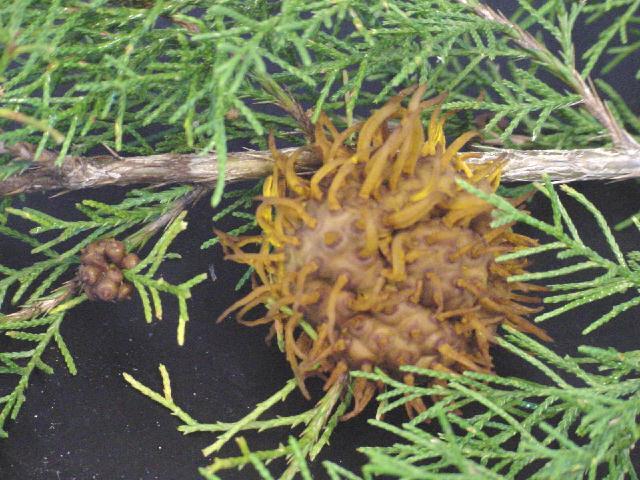
by Matthew Orwat | Jul 8, 2014
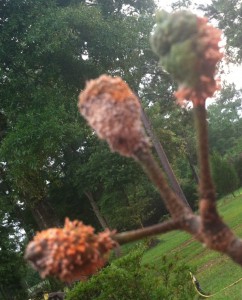
Cedar-Apple rust or Cedar-Quince rust (Gymnosporangium) symptoms on pear fruit. Image Credit Shep Eubanks, UF IFAS.
This is the season for fruit harvesting, particularly for those fruits in the rose family such as plum, quince, peach, pear and apple. Many avid home horticulturists have been enjoying the fruits of their labor, but some have been thwarted by an unlikely and ugly disease.
This fungal disorder, commonly called cedar-apple rust and caused by various species of Gymnosporangium, has the potential to ruin Quince, Pear and Apple crops in gardens throughout Northwest Florida. Early scouting and vigilance will pay off.
This condition begins on native juniper species (known as cedars). A spore producing gall forms on the branches of the cedar tree, which begin to produce spores during wet weather. Spores, once produced, can travel up to a mile via wind. If spores land on susceptible plant tissue when a film of water is present, it will germinate and infect the fruit, twig or leaf. Although black spots develop on the plant with in 7-10 days of infection, orange tubes called aecia won’t develop until 4 or more weeks after infection. Next, spores are released from the aecia located on the fruit tree and travel to infect new juniper plants . The infected junipers will not show symptoms until the next growing season but they can manifest as galls or orange ooze present under bark. Different species of Gymnosporangium will infect trees differently. Some live only for one year while others, known as ceder-quince rusts, can last up to 20 years. Twigs infected with this disease usually die within several years of infection.
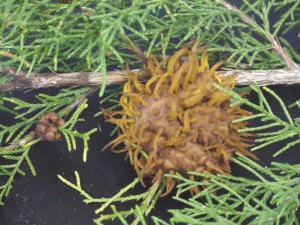
Ceder-Apple Rust on infected juniper host species. Image Credit Hank Dankers UF IFAS.
Although this may seem like an impossible situation, several control strategies exist.
- Remove Infected branches: Removal of infected plant tissue will reduce the spread of the disease in your garden.
- Removal of infected juniper host species: If the juniper or “cedar” in your landscape is something you can sacrifice, removal is warranted in cases of heavy infection.
- Avoid planting susceptible species of juniper next to susceptible fruit tree species.
- Treatment of fruit trees with fungicide: Preventative fungicidal sprays of products containing the active ingredients of sulfur, captan, chlorothalonil, or mancozeb and similar products can be effective. They will not cure existing conditions but are useful if you know that rusts are present in your area. Please read all pesticide labels before application, since there are pre-harvest limitations present on some products.
For additional information, please consult you local county extension office or review these publications by UF IFAS specialists (Florida Plant Disease Management Guide) and the Missouri Botanical Garden.
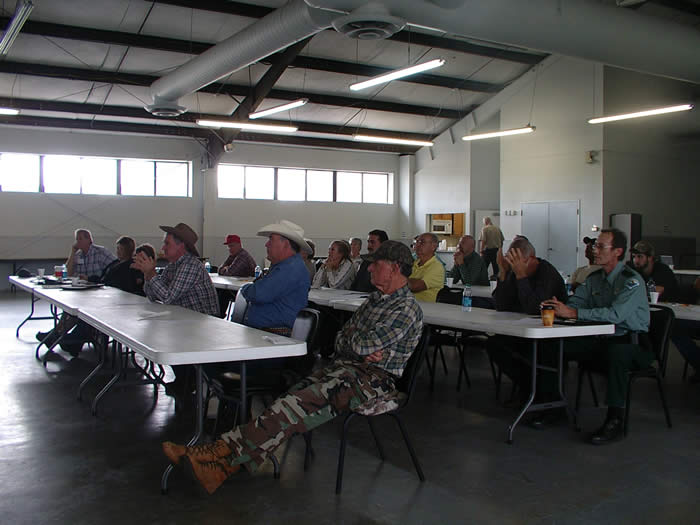
by Matthew Orwat | Jul 8, 2014
 Core, Ornamental and Turf
Core, Ornamental and Turf
Pesticide Training & Exam
July 31, 2014
8:00 am – 5:00 pm
***** 2 CEUs available in CORE and 2 CEUs available in O&T*****
 Location: Washington County Extension Office, at the Agriculture Center
Location: Washington County Extension Office, at the Agriculture Center
1424 Jackson Ave. Chipley, Fl. Suite A
East Wing Conference Room
To Register Contact Matt or Cynthia at 850-638-6180 or mjorwat@ufl.edu .
Cost:
$20.00 all day
Or
$10.00 if only attending morning or afternoon session
Agenda:
CORE Training and Exam section
- 7:45-8:00 — Registration and Introduction (morning refreshments)
- 8:00-9:40 Pesticide Effects on Humans and the Environment
- 9:40 – 10:50 Pesticide Labeling
- 11:00-12:30 CEUs Issued / Exam
- 12:30-1:30—Lunch (provided)
Ornamental & Turf Training and Exam section
- 1:30-2:20 Identifying and Controlling In-sects,Weeds and Disease
- 2:20-3:30 Reading Herbicide Labels and Calculating Application Rates
- 3:30-5:00 CEUs Issued / Exam

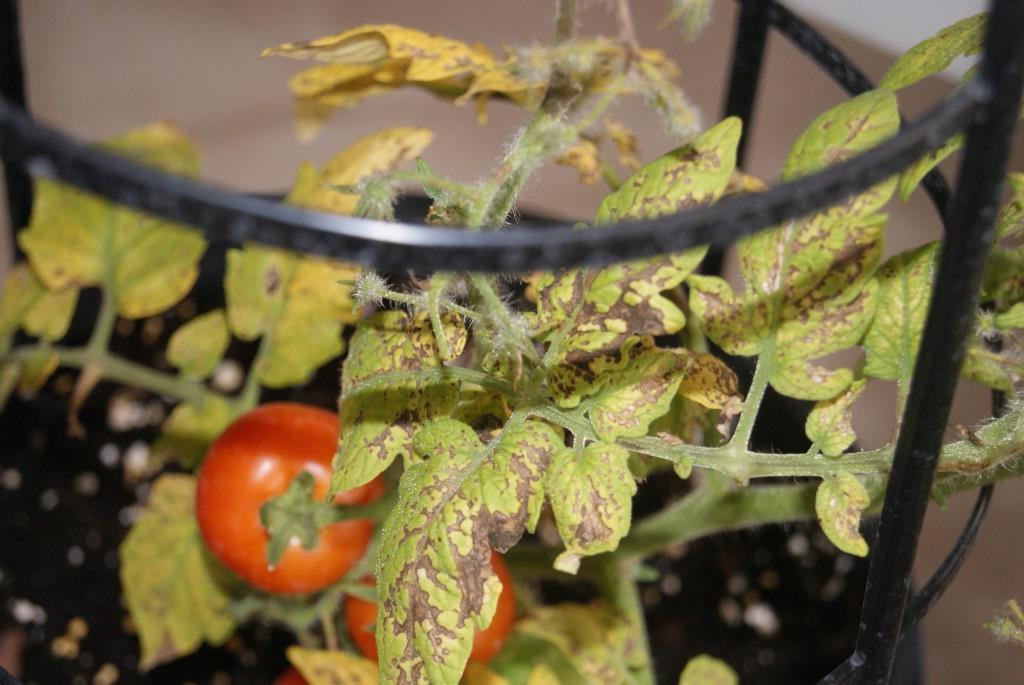
by Matthew Orwat | May 20, 2014
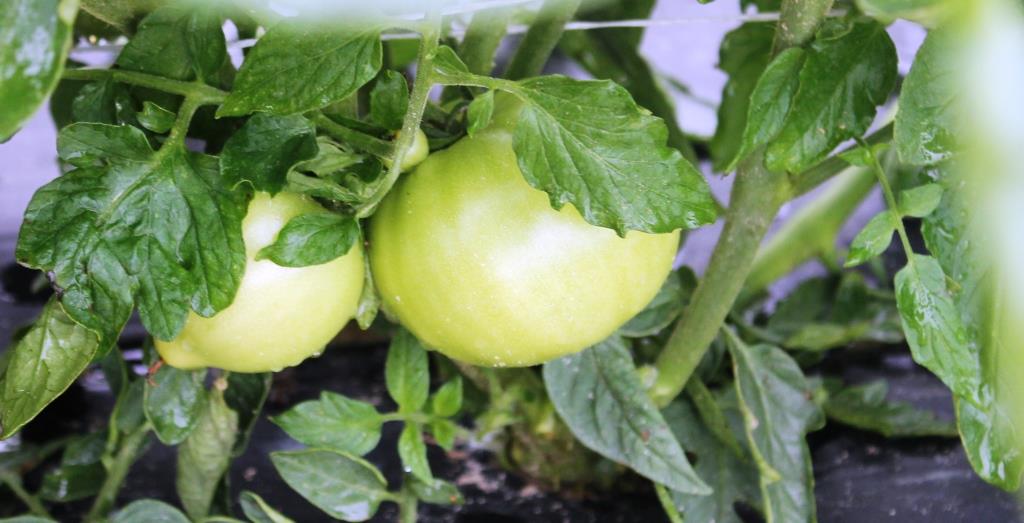
Healthy, Developing Tomato. Image Credit Matthew Orwat
One of the most common tomato problem home gardeners encounter in the late spring and early summer is blossom end rot. The good news is that blossom end rot can be prevented with the use of drip irrigation and adequate fertilization. Since tomatoes need a consistent supply of water to prevent blossom end rot, drip under plastic works well. Blossom end rot effects crops in the solanaceae family and appears as a grey, mushy dead area at the base of the vegetable. It is caused by calcium deficiency but is usually a result of wet / dry cycles brought on by an inconsistent irrigation program. The best cure for blossom end rot (BER) is a consistent level of soil moisture throughout the fruiting cycle.
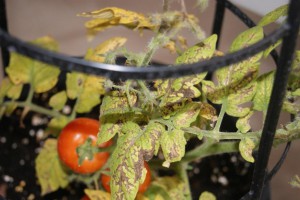
Bacterial Leaf Spot Symptoms
Due to recent rain, warm days, and cool nights, leaf diseases could be developing, so now is a good time to scout tomatoes.Look for brown spots, spots with halos, wilting leaves, and yellowing leaves. This could be a sign of bacterial leaf spot, which is transmitted when rain splashes soil and water on leaves of the plants. Affected leaves should be removed from the growing area and destroyed. Once leaves are affected, there is no cure, but preventative sprays of copper-containing fungicide (bactericide) plus mancozeb sprays can reduce incidence of infection, if the spray program is initiated before too many spots are present.
For a detailed look at the various diseases of tomato, the EDIS publication “A Series on Diseases in the Florida Vegetable Garden: TOMATO” offers an excellent summary. Another resource UF/IFAS offers for disease diagnosis is the NFREC U-scout website. U-Scout provides information on over 40 potential disease issues in tomato. Additionally, any plant disease can be diagnosed through your County Extension Office and the Plant Pathology lab at the North Florida Research and Education Center.
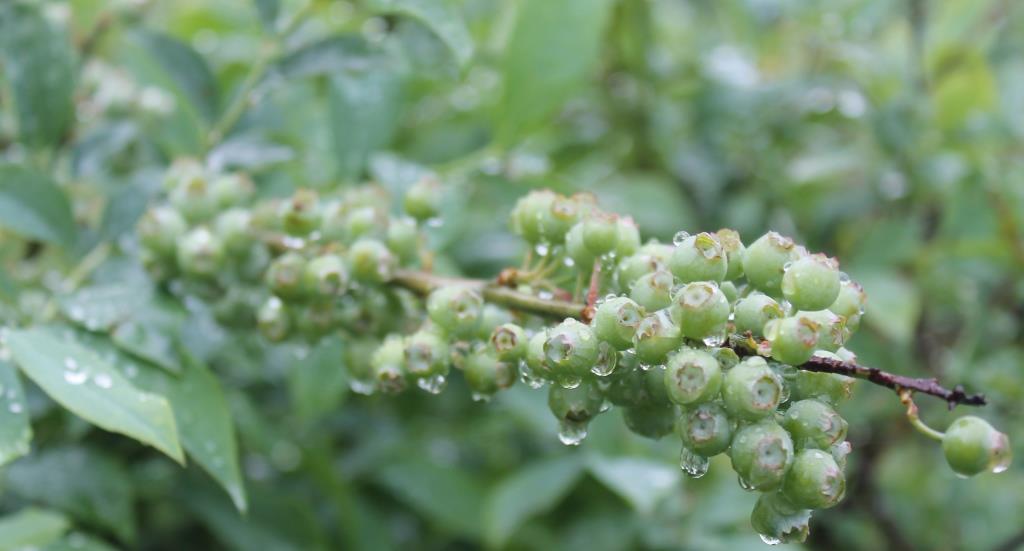
by Matthew Orwat | May 6, 2014
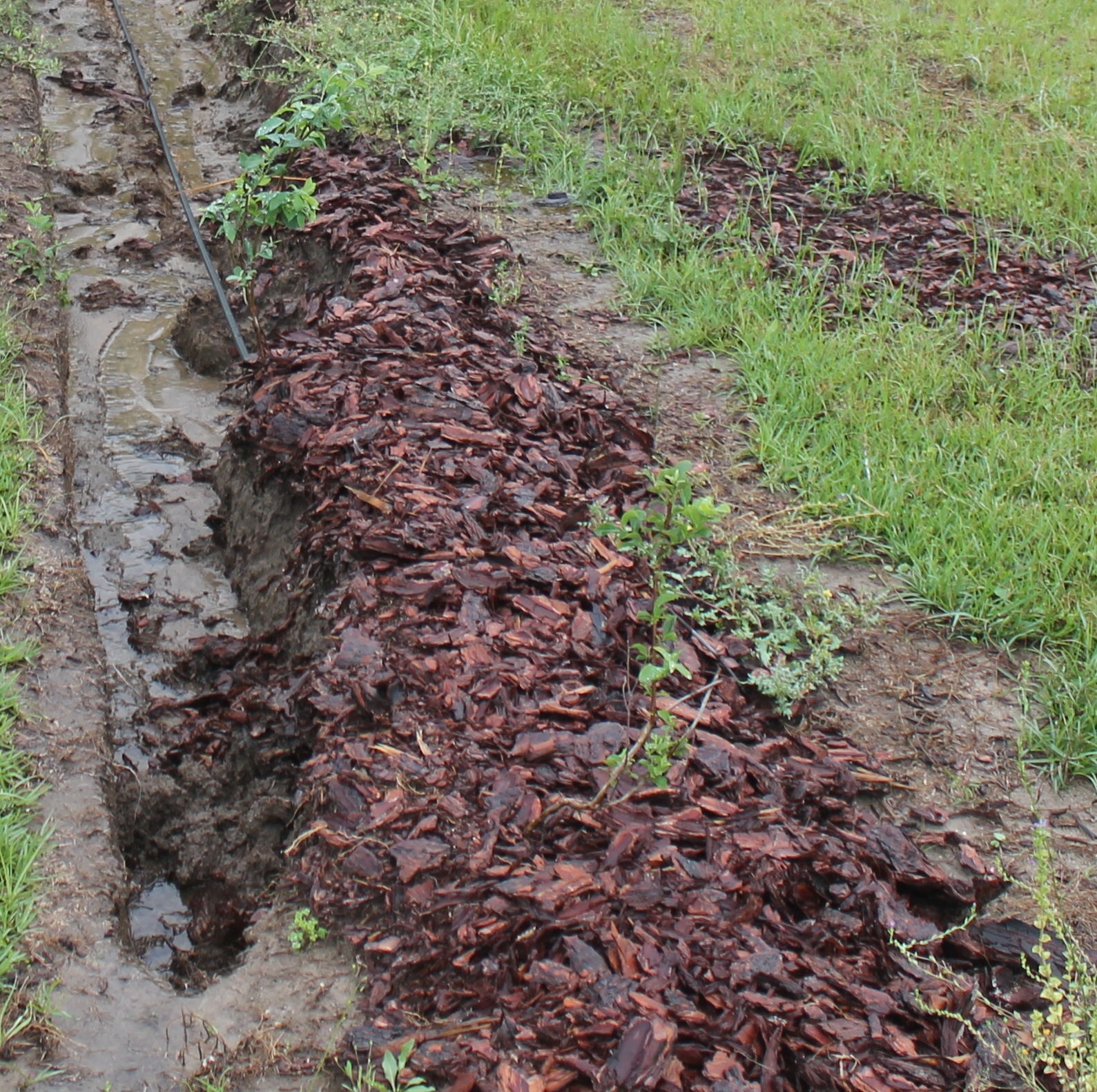
Wash-out in blueberry field, young planting. Image Credit Matthew Orwat
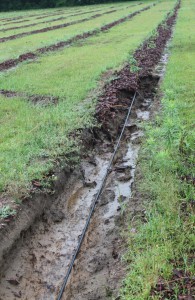
Washed out row in young blueberry field. Image Credit: Matthew Orwat
Although the central Florida panhandle has been hit with excessive rainfall this spring, the blueberry yield this year is on track to be above average. Colder winter temperatures coupled with wet spring weather has enhanced the yield potential of properly tended and well established planted blueberries. If you have a few established blueberry plants in your home orchard, the outlook looks bright. If you do not, don’t fret. There are plenty of U-Pick operations and local farmers market vendors that will have berries available June through July, at great prices!
Blueberries do best planted in low pH soil on slightly sloping ground. This prevents the collection of water and resulting root rot in areas with poor drainage. While this situation is ideal for established blueberry plants, this slightly sloping situation can cause issues for newly planted blueberries. Field wash-outs caused by excessive rainfall can wreck newly planted rows, because the pine bark added to the planting trench is less dense than soil.
After all this rain, what should the home gardener do to ensure a productive harvest this summer? Addition of fertilizer will help. Although blueberries usually require low fertilization rates, if leaves show yellowed edges, red spots or general yellowing, fertilizer may have leached out. Application of a few ounces of ammonium or urea based fertilizer around the root zone (24 inch) of established plants may be beneficial. It is a good idea to look for “Blueberry Special” blends or “Camellia & Azalea” fertilizer. To learn more about blueberry fertilization, consult the Blueberry Gardener’s Guide.
A drier May will help blueberries produce their greatest sweetness as they develop. Late May and June rains could cause fruit split, so less rain during this period is desired!

Blueberries developing for harvest, a month away. Image Credit Matthew Orwat
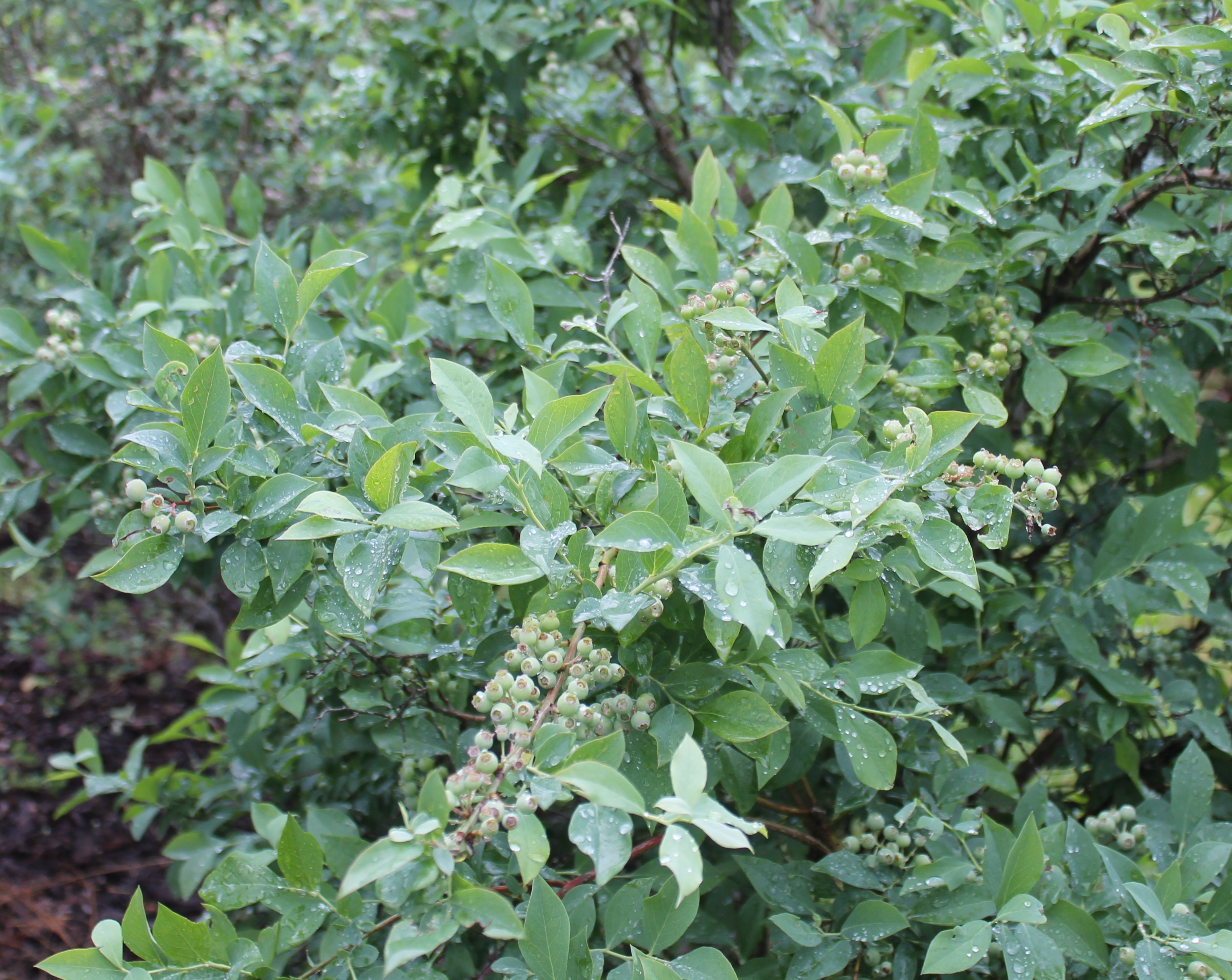
Blueberry bush, full of developing fruit. Image Credit Matthew Orwat
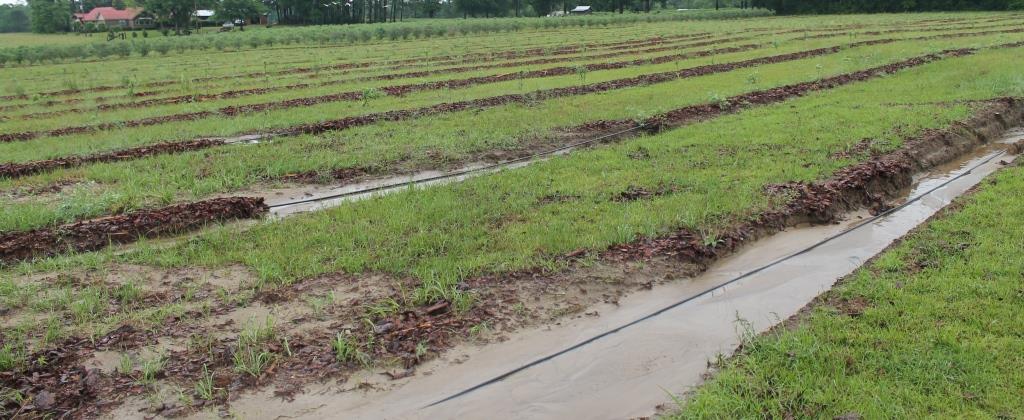
Washed out rows of young blueberries. Note healthy established plants in the background. No washout due to established root system. Image Credit Matthew Orwat

Emergency drainage ditch dug to reduce wash-out damage from field runoff. Image Credit Matthew Orwat
by Matthew Orwat | Apr 8, 2014
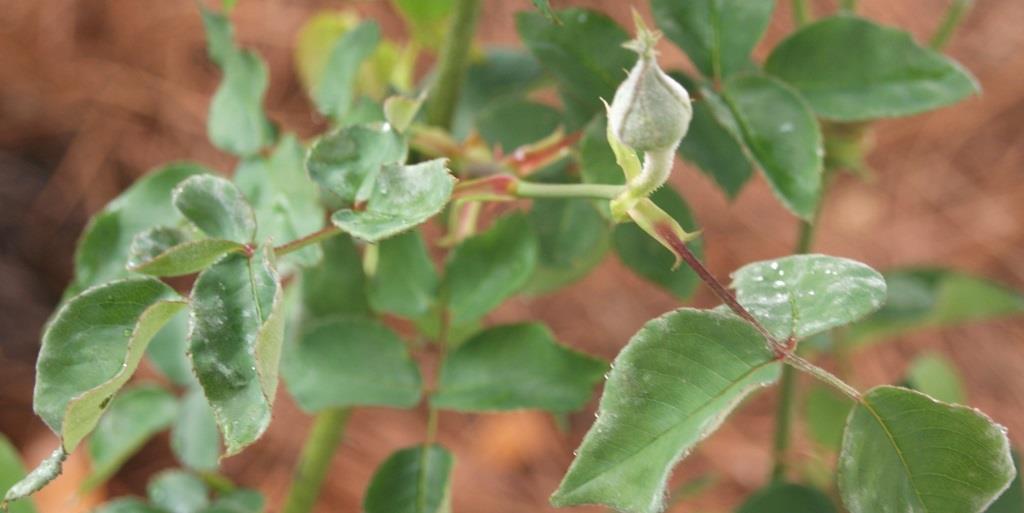
Powdery mildew on rose bud. Image Credit Matthew Orwat.
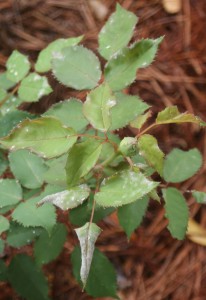
Powdery mildew on rose leaf. Image Credit Matthew Orwat.
This spring powdery mildew has been prevalent on many non-resistant cultivars of ornamental plants, particularly rose and crapemyrtle.
Ideal conditions for powdery mildew development, warm days and cool nights followed by rain, have been present for several weeks in Northwest Florida.
This fungus, which looks like powdered sugar and is caused by several different species, appears on new growth and causes distorted and stunted leaf and flower development. It grows in thin layers on the surface of leaves and reproduces by spores.
Mild cases are of little concern, as most plants will grow out of it once environmental conditions change to be less favorable for development of the pathogen. Severe cases can cause distorted growth, leaf drop and flower destruction.
In these cases, fungicide application will protect new growth from this disease. Some lower toxicity fungicides that have been shown to have effectiveness on powdery mildew include neem oil and potassium bicarbonate (otherwise known as Baking Soda).
Sulfur can be used, but cannot be applied when temperatures reach above 90 ° F. Other chemical fungicides, including those containing myclobutanil, or azoxystrobin can be used but products obtained must be labeled for ornamental use. Remember, the label is the law.
Many disease resistant cultivars of rose and crapemyrtle exist, please follow the links provided for more information.
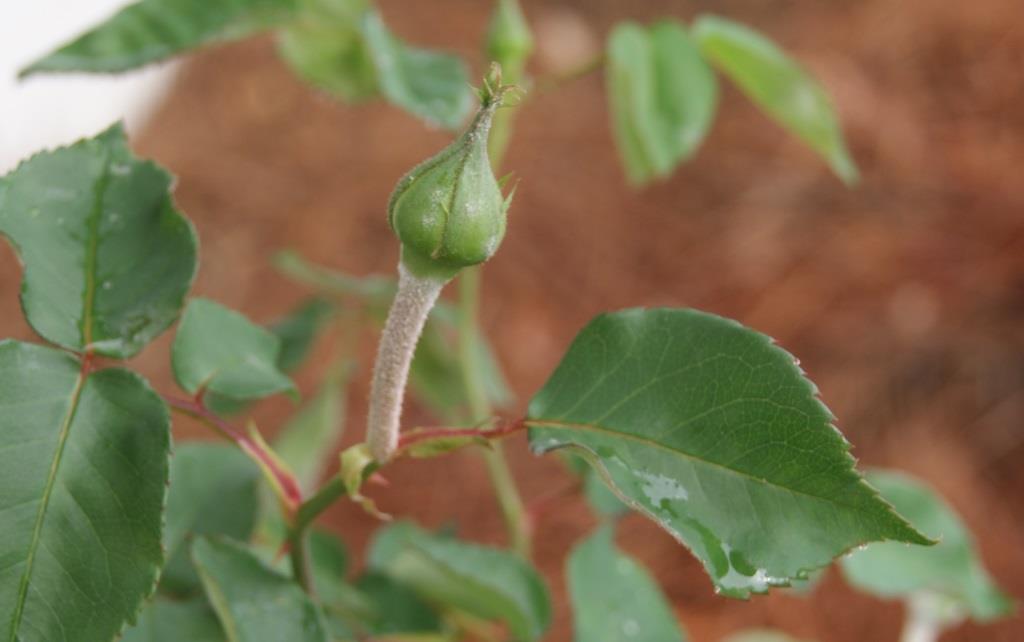
Powdery mildew on rose petiole. Image Credit Matthew Orwat.
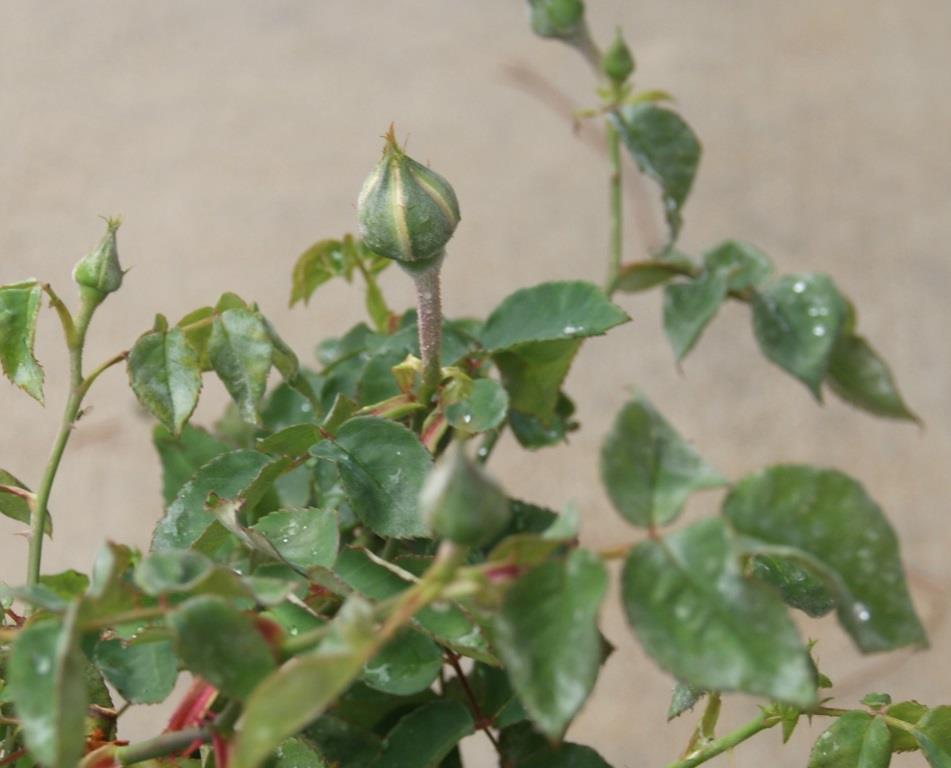
Powdery mildew on rose. Image Credit Matthew Orwat.



















